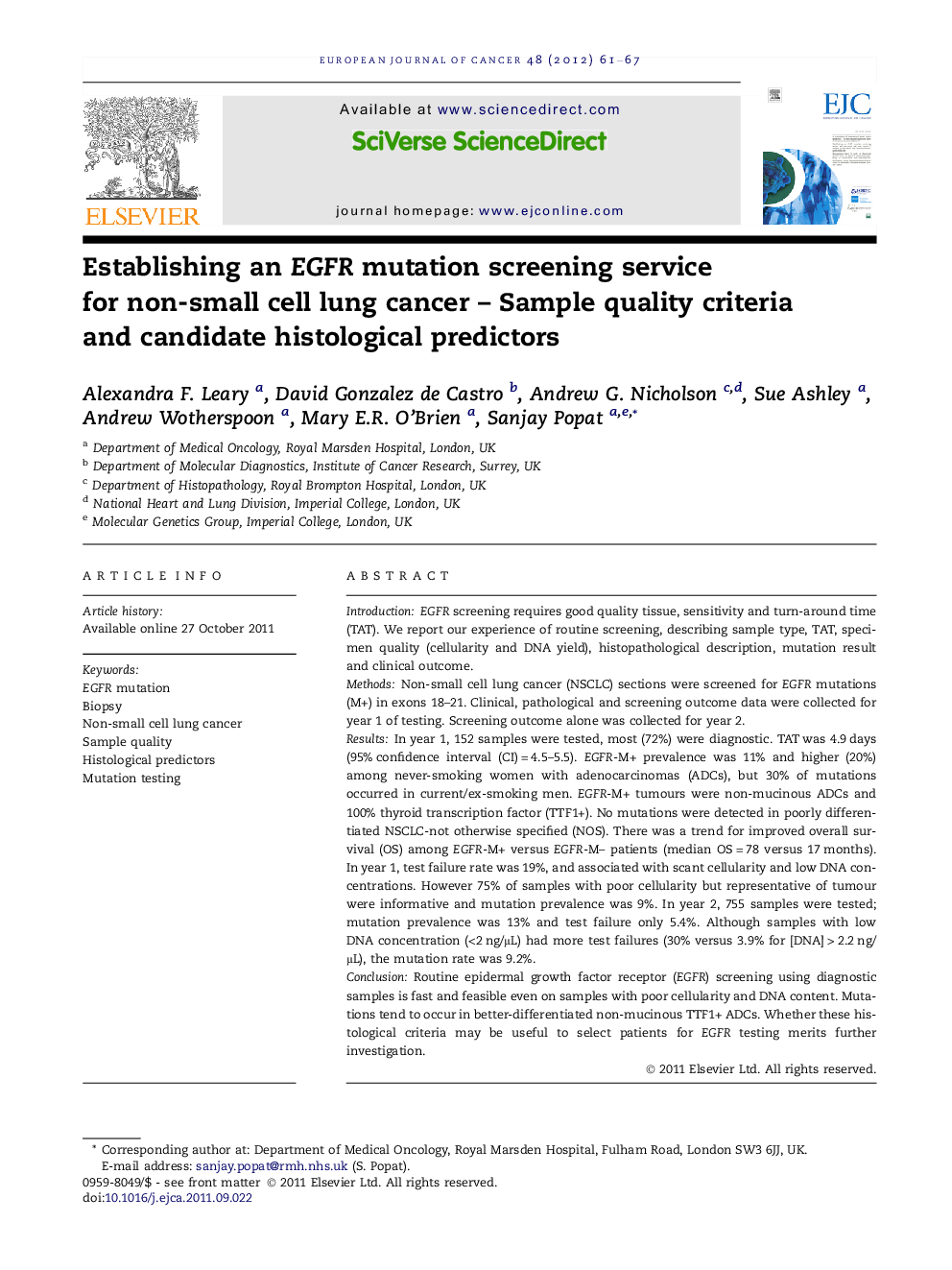| کد مقاله | کد نشریه | سال انتشار | مقاله انگلیسی | نسخه تمام متن |
|---|---|---|---|---|
| 2122381 | 1547173 | 2012 | 7 صفحه PDF | دانلود رایگان |

IntroductionEGFR screening requires good quality tissue, sensitivity and turn-around time (TAT). We report our experience of routine screening, describing sample type, TAT, specimen quality (cellularity and DNA yield), histopathological description, mutation result and clinical outcome.MethodsNon-small cell lung cancer (NSCLC) sections were screened for EGFR mutations (M+) in exons 18–21. Clinical, pathological and screening outcome data were collected for year 1 of testing. Screening outcome alone was collected for year 2.ResultsIn year 1, 152 samples were tested, most (72%) were diagnostic. TAT was 4.9 days (95% confidence interval (CI) = 4.5–5.5). EGFR-M+ prevalence was 11% and higher (20%) among never-smoking women with adenocarcinomas (ADCs), but 30% of mutations occurred in current/ex-smoking men. EGFR-M+ tumours were non-mucinous ADCs and 100% thyroid transcription factor (TTF1+). No mutations were detected in poorly differentiated NSCLC-not otherwise specified (NOS). There was a trend for improved overall survival (OS) among EGFR-M+ versus EGFR-M– patients (median OS = 78 versus 17 months). In year 1, test failure rate was 19%, and associated with scant cellularity and low DNA concentrations. However 75% of samples with poor cellularity but representative of tumour were informative and mutation prevalence was 9%. In year 2, 755 samples were tested; mutation prevalence was 13% and test failure only 5.4%. Although samples with low DNA concentration (<2 ng/μL) had more test failures (30% versus 3.9% for [DNA] > 2.2 ng/μL), the mutation rate was 9.2%.ConclusionRoutine epidermal growth factor receptor (EGFR) screening using diagnostic samples is fast and feasible even on samples with poor cellularity and DNA content. Mutations tend to occur in better-differentiated non-mucinous TTF1+ ADCs. Whether these histological criteria may be useful to select patients for EGFR testing merits further investigation.
Journal: European Journal of Cancer - Volume 48, Issue 1, January 2012, Pages 61–67